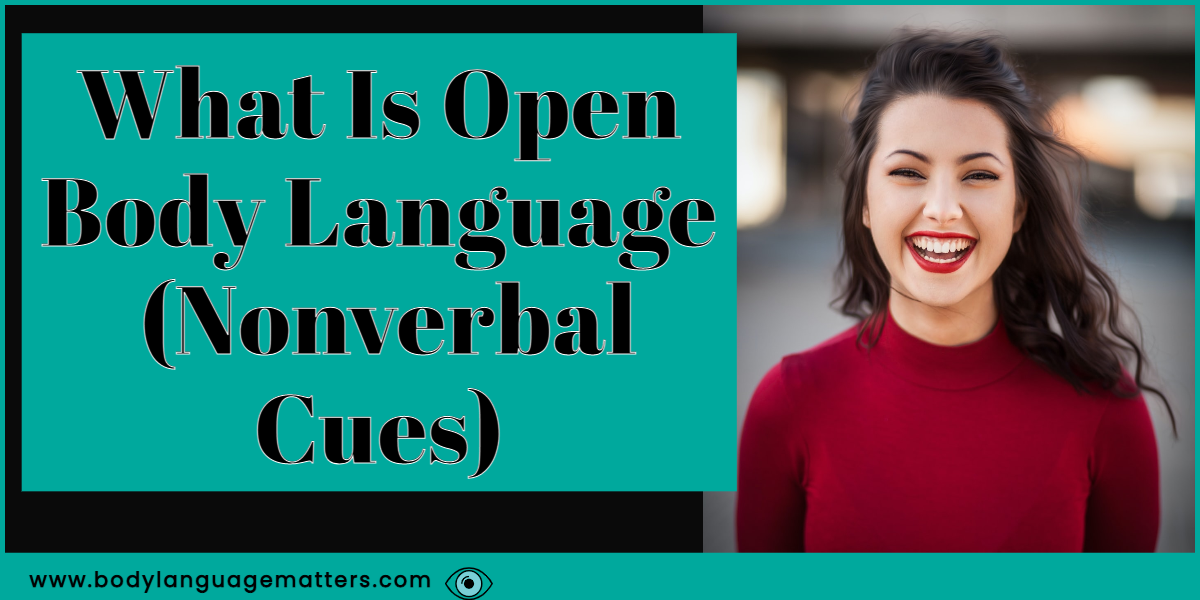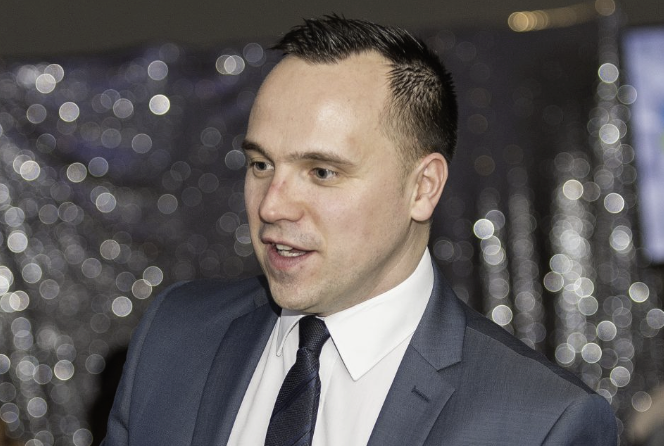There are a few things you need to understand about open body language. Being open with your nonverbal communication can support what you are saying and help you express honesty.
Open position body language is when a person’s posture and gestures indicate that they are approachable and open to communication. This can be done through nonverbal cues such as maintaining eye contact, keeping an open stance, and orienting the body toward the person you’re talking to. It’s important to keep in mind that everyone expresses themselves differently, so it’s best to pay attention to how the other person is responding to your own cues.
A key point to remember about open body language is that any part of the body that is expanding is becoming open, while anything that is contracting is becoming closed. Next up we will take a look at 14 types of open body language.
- 13 Open Body language Examples.
- Uncrossed arms and legs. What Is Open Body Language
- Nodding in agreement. What Is Open Body Language
- Open arms. What Is Open Body Language
- Head tilt. What Is Open Body Language
- Positive facial expressions. What Is Open Body Language
- Standing with feet more than shoulder-width apart. What Is Open Body Language
- Standing with hands on hips. What Is Open Body Language
- Standing with arms crossed. What Is Open Body Language
- Leaning forward. What Is Open Body Language
- Making eye contact. What Is Open Body Language
- Smiling. What Is Open Body Language
- Chin exposed. What Is Open Body Language
- Chest, Torso, and belly exposed. What Is Open Body Language
- frequently asked questions
- Why is open body language important?
- What does open body language mean?
- How do you describe open posture?
- How do you use open body language?
- Is open body language positive?
- Why is Body Language So Important?
- Is open body language the same as positive body language?
- Is a handshake an open body language cue?
- Final Thoughts.
13 Open Body language Examples.
- Uncrossed arms and legs
- Nodding in agreement
- Open arms.
- Head tilt.
- Positive facial expressions
- Standing with feet more than shoulder-width apart
- Standing with hands on hips
- Standing with arms crossed
- Leaning forward
- Making eye contact
- Smiling
- Chin exposed.
- Chest, Torso, and belly exposed.
- Hands open palms up.
Uncrossed arms and legs.
Uncrossed arms and legs is considered open body language. Open body language is often seen as a positive sign, as it indicates that the person is comfortable and approachable. Crossing one’s arms or legs can be seen as a defensive gesture, so uncrossing them can make the person appear more welcoming.
Nodding in agreement.
Nodding in agreement is a form of body language that indicates that you are in agreement with what the other person is saying. It is a nonverbal way of showing that you are listening and understand what the other person is saying. Nodding can also be used to encourage the other person to continue talking.
Open arms.
Open arms is a form of body language that indicates openness and friendliness. It is often used as a gesture of welcome or as an offer of help. When someone stands with their arms open, it usually means they are open to talking and getting to know you better.
Head tilt.
Head tilt is a gesture in which the chin is tilted upward and the head is tilted to one side. It is used to express interest, curiosity, or confusion.
Positive facial expressions.
Positive facial expressions are an important part of communication. They can help convey your feelings and emotions, and they can also help build rapport with the person you’re talking to. When you make eye contact and smile, it shows that you’re interested in what the other person has to say. It also makes you appear more approachable and trustworthy.
Standing with feet more than shoulder-width apart.
Open body language is when your feet are more than shoulder-width apart and your arms are not crossed. This is a confident and welcoming stance that shows you are open to communication.
Standing with hands on hips.
Open body language is when your posture is open and welcoming. This includes standing with your hands on your hips, keeping your arms open at your sides, and facing the person you’re talking to. Open body language shows that you’re interested in what the other person has to say and that you’re approachable. It’s a great way to make a good first impression or build rapport with someone.
Standing with arms crossed.
When someone stands with their arms crossed, it usually indicates that they are closed off and not interested in engaging with others. This body language can be interpreted as defensive or unapproachable, and is often seen as a way to protect oneself.
Leaning forward.
Open body language is when your body is facing the person you’re talking to, and your arms and legs are not crossed. It shows that you’re interested in what they have to say, and it makes you seem more approachable.
Making eye contact.
Open body language is when someone’s posture and gestures express confidence and openness. This usually includes maintaining eye contact, keeping an upright posture, and avoiding crossing your arms or legs. Open body language makes you appear approachable and can help put others at ease. It’s also a sign of respect when you’re speaking to someone.
Smiling.
Smiling is an important part of nonverbal communication. It can convey a range of emotions, from happiness and joy to sympathy and empathy. When we smile at someone, we are sending a message that we like them, that we are interested in them, and that we are approachable. Smiling can also make people feel more relaxed and comfortable around us.
Chin exposed.
Chin exposure is a form of body language in which the chin is held up and out, away from the neck. This can be done consciously or subconsciously, and it is often a sign of confidence. When someone is feeling confident, they are more likely to expose their chin. This is because they are not worried about being attacked or appearing weak.
Chest, Torso, and belly exposed.
Open body language is often associated with honesty, confidence, and openness. When someone’s chest and torso are exposed, it usually means they’re comfortable with you and are willing to be open and honest. This is often seen in friendly hugs or when someone is leaning in during a conversation. It can also be seen in more intimate situations, such as when someone is undressing.
Next up we will take a look at some commonly asked questions.
frequently asked questions
Why is open body language important?
When we communicate, our body language makes up a large part of what we’re saying. For example, if we cross our arms or legs, we’re usually creating a barrier between ourselves and the person we’re talking to. This can make the other person feel like we’re not interested in what they have to say, or that we’re closed off to them.
Good, the open body language shows that we’re engaged in the conversation and that we’re interested in the other person. It can make the difference between a productive conversation and one that fizzles out.
What does open body language mean?
An open body language means that the person is approachable and is interested in talking. The person’s arms and legs are uncrossed, and they may be leaning slightly toward the person they are talking to. This type of body language shows that the person is comfortable and confident.
How do you describe open posture?
Open posture would generally be described as keeping your arms and legs uncrossed, facing the person you are talking to, and maintaining eye contact. Good posture can also convey confidence and make you appear more approachable.
How do you use open body language?
You can use open body language when you want to send nonverbal signals you are not a threat or have anything to hide.
Is open body language positive?
Most people believe that open body language is positive because it suggests that the person is comfortable and confident.
Why is Body Language So Important?
Body language is so important because it is one of the most important nonverbal communication cues. It can reveal what a person is thinking or feeling, and it can be an important form of communication. 60% of communication is non-verbal communication using body language is a powerful way to describe how we feel.
Is open body language the same as positive body language?
The two terms are often used interchangeably, but they technically refer to slightly different things. Positive body language is any nonverbal cue that conveys confidence, interest, and energy. Open body language, on the other hand, is any nonverbal cue that indicates approachability and receptiveness. So while all open body language is positive, not all positive body language is open.
Is a handshake an open body language cue?
Yes, a handshake shows you are not holding anything or have any bad intentions at that moment. It’s a recognized form of greeting.
Final Thoughts.
When it comes to open body language you really need to think about it as the body opening up – think expanding such as the arms open, hands palm up, or displayed. Any other body movement or hand gestures could be seen as a closed body language cue. We hope you have found your answer and you may also like to read Legs Open Body Language Communicate Without Words for more meaning on open body language. Thank you for taking the time to read.

